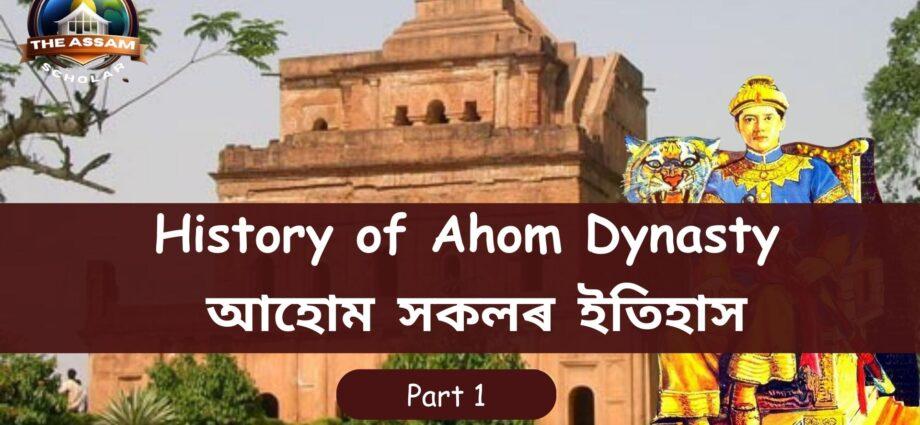From Humble Beginnings to Mighty Empire: The Enduring Legacy of the Ahom Dynasty
Imagine a kingdom born in the fertile plains of Assam, nurtured by the mighty Brahmaputra, and destined to leave an indelible mark on history. This, in essence, was the Ahom Dynasty, a 600-year saga of courage, cultural vibrancy, and unwavering resilience. Let’s embark on a journey through their remarkable story, highlighting pivotal battles that shaped their destiny.
From Migrants to Kings: Setting the Stage:
Led by the visionary Chaolung Sukaphaa, a band of Tai people from present-day Myanmar crossed the Patkai mountains in 1228, settling in Charaideo. Through diplomacy and strategic alliances, they forged a multi-ethnic society, laying the foundation for a powerful kingdom. By the 16th century, their dominion stretched across vast swathes of Assam, Arunachal Pradesh, and Nagaland, marking the dawn of an era of prosperity and cultural flourishing.
Watch the full video on Ahom History
Facing the Giants: Battles that Defined the Ahoms:
The Bengal Onslaught (16th Century): Bengal Sultans attempted to subjugate the Ahoms, but faced fierce resistance, particularly during the reign of Swargadeo Shuklenmung. The Ahoms’ innovative guerrilla tactics and mastery of riverine warfare proved decisive, securing their independence.
The Mughal Challenge (1615-1682): The clash with the mighty Mughals remains a defining chapter in Ahom history. Despite initial setbacks, culminating in the occupation of their capital in 1662, the Ahoms refused to yield. Under the legendary leadership of Lachit Borphukan, they inflicted a crushing defeat on the Mughals at the Battle of Saraighat (1671), driving them out permanently by 1682. This landmark victory cemented the Ahoms’ reputation as an undefeatable force.
Internal Strife and External Threats (18th-19th Centuries): Weakened by internal conflicts and facing rising powers like the Moamoria rebels and the Burmese, the Ahoms entered a period of decline. Despite valiant efforts by the Tungkhungia kings, British intervention ultimately led to the kingdom’s annexation in 1826.
Beyond Warfare: A Legacy Etched in Stone and Silk:
The Ahom reign wasn’t just about battles; it was also an era of cultural and artistic expression. They patronized exquisite temples like the Sivadol, nurtured Assamese literature, and fostered unique traditions like the vibrant Bihu festival. Their innovative agricultural practices, including the Ahom irrigation system, ensured economic prosperity. The Paik system, though complex, contributed to a vibrant society.
A Legacy that Endures:
Though the Ahom Dynasty faded, its impact continues to resonate throughout Assam. Their administrative structures influenced future states, their cultural contributions enriched Assamese identity, and their spirit of resilience serves as an inspiration. From the intricate Assamese language to the majestic Ahom monuments, their legacy lives on.
Click Here for the Previous Year’s APSC Question Paper
Moreover, your support has been invaluable to us. We are grateful for your continued support…
Follow us on

